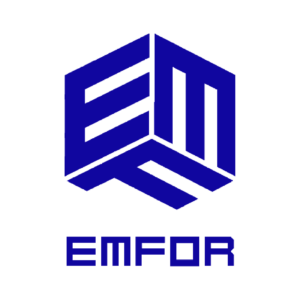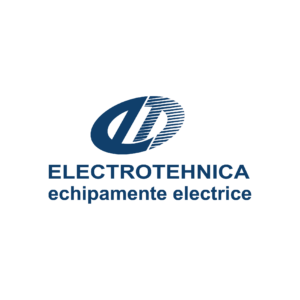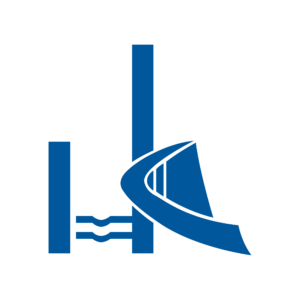Tower testing station
At SIS we perform preparatory and testing activities for a complex and wide range of latticed, tubular or guyed steel towers, for suspension, tension or dead end.
The Tower Testing Station was built to perform design and physical tests on metal lattice towers.

ABOUT THE STATION

ABOUT THE STATION

Towers are the elements of the lines which support the active and protective conductors, at the prescribed distances, both between them and above the ground.
They must withstand their own efforts, in normal situations or due to wind pressure, conductors, for normal situations, damage or additional loads due to wind pressure and the presence of frost, insulators and fittings, as well as the action of the wind on them.
In general, the steel towers of Overhead Power Lines are latticed constructions, subjected to external forces (wind and frost). Under the action of these forces appear in the constructive elements of the tower internal stresses, which are determined on the basis of known laws of strength of materials.
The EM Tower Testing Station is located in Bucharest, in the immediate vicinity of the EM Tower Factory and was built to verify that the Overhead Power Line towers withstand the loads for which they were designed.
The concept of Towers Testing Station was defined by ROENG Transmission Electric & Consulting (formerly Fichter Engineering) which has experience in towers testing, attending to more than 100 tests in different stations across India (Mumbai, Jaipur, Jabalpur, Nagpur, Nasik, Cheney), China (Jiangsu, Beijing) and Romania (CELPI).
Therefore, it is possible to assemble the tower prototype and to modify or replace any part of the tower that may have failed during the test in a very short period of time.

HOW IT WORKS

HOW IT WORKS


The EM Tower Testing Station (SIS) has an adjustable foundation that allows the installation of various ranges of towera with base dimensions of up to 35×35 meters, a frame for transverse loads and a double frame for longitudinal loads.
The maximum force on a conductor is 90 tonnes for transverse loads, 60 tonnes for longitudinal loads and 45 tonnes for vertical loads. A number of 26 winches are available for transverse forces, 20 winches are available for longitudinal forces and 20 winches are available for vertical forces. Towers with a maximum height of 80 meters can be tested.
The forces are applied with reversible electric winches. All winches can be controlled locally or remotely from the control room.
The load is applied by cables and measured with the load cells installed as close as possible to the point of application of the load.
The application of loads (winches) and load cell readings are controlled by a computerized system in the control room of the test station (SCADA system).
The displacements of the towers are measured with the help of theodolites.
Communication between the test manager and operators is done through radio stations.
After completion of the test, the tower is inspected before disassembling it to observe any deformations.
Also, samples from the metallic elements of the tested tower are prepared and tested in the EM – FSMZ laboratory to measure the efficiency and the traction force.
The test report, which summarizes all relevant aspects, will be prepared and handed over to the customer by ELECTROMONTAJ, at the end of the test, including the video documentation for reference.
The Tower Testing Station keeps records with relevant information for a period of 10 years.

EXPERIENCE

EXPERIENCE


So far, EM has successfully tested more than 50 towers for overhead power lines with a nominal voltage of up to 500kV in other testing stations, using testing procedures developed by EM, Overhead Power Line Design Department.
The EM Tower Testing Station staff have extensive experience in similar testing stations and are very well trained in complying with and following the testing procedures, developed according to the documentation received from customers.
TECHNICAL SPECIFICATIONS

TECHNICAL SPECIFICATIONS

Technical data
Universal Foundation Dimensions
Maximum Height of Tested Tower
Maximum Compression / Uplift per Leg
Allowable Overturning Moment
Maximum Cross Arm Spread
Maximum Transverse Wire Load
Maximum Longitudinal Wire Load
Maximum Vertical Wire Load
Load Application System
Longitudinal Force on the Gantry
Transversal Force on the Gantry
Maximum Capacity for Vertical Force
Load Measurement System
Sample Material Testing and Cell Calibration
Crane for Tower Erection
Deflection Measurement
Deflection Measurement
Ilioara - Tower Testing Station
35 m x 35 m
82.3 m (90 m)
830 t / 700 t (1000 t)
50.000 t-m
70 m
90 t per point (100 t)
60 t per point (75 t)
45 t per point (50 t)
66 electronically controlled winches of 5 t, 6 t and 7.5t (Pfaff production)
(H = 81.7 m) 560 t (20 points)
(H = 82.3 m) 720 t (26 points)
500 t (20 points)
Load cells
– 60 t;
– 100 t;
COMANSA Tower crane (82.3 m height with 55 m arm length and 12 t/R = 25 m capacity)
Optical theodolite
Electrical winches (produced by Pfaff Germany) operated by frequency converters and run through SCADA
Tower Testing Station - Ilioara
Universal Foundation Dimensions: 35m x 35m
Maximum Height of Tested Tower: 82.3 m (90 m)
Maximum Compression / Uplift per Leg: 830 t / 700 t (1000 t)
Allowable Overturning Moment: 50.000 t-m
Maximum Cross Arm Spread: 70 m
Maximum Transverse Wire Load: 90 t per point (100 t)
Maximum Longitudinal Wire Load: 60 t per point (75 t)
Maximum Vertical Wire Load: 45 t per point (50 t)
Load Application System: 66 electronically controlled winches of 5 t, 6 t and 7.5 t (Pfaff production)
Longitudinal Force on the Gantry: (H = 81.7 m) 560 t (20 points)
Transversal Force on the Gantry: (H = 82.3 m) 720 t (26 points)
Maximum Capacity for Vertical Force: 500 t (20 points)
Load Measurement System: Load cells
Sample Material Testing and Cell Calibration: 60 t or 100 t
Crane for Tower Erection: COMANSA Tower crane (82.3 m height with 55 m arm length and 12 t/R = 25 m capacity)
Deflection Measurement: Optical theodolite
Optical theodolite: Electrical winches (produced by Pfaff Germany) operated by frequency converters and run through SCADA
The Future is Electric.
We support the global transition towards
a sustainable future,based on electrical energy.



